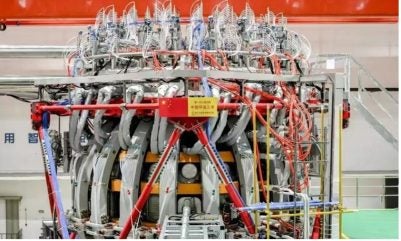
China’s Huanliu-3 (HL-3) tokamak has launched a new series of physical experiments, incorporating for the first time a digital twin system developed by China National Nuclear Corporation (CNNC). The HL-3 is the largest and most advanced magnetic confinement tokamak device in China.
A key aspect of the device’s operation is the “baking” of the vacuum chamber, with the digital twin system acting as a “super eye” for this process This creates a digital model in virtual space that is identical to the physical entity, allowing for real-time and precise monitoring of the vacuum chamber baking process.
The digital twin system focuses on the temperature distribution within the vacuum chamber and creates an accurate digital model. By receiving data from heaters and physical temperature monitoring points, the system uses virtual sensor algorithms to output a complete temperature distribution in real-time.
The application of the digital twin system marks significant progress ensuring safe and stable operation of the tokamak, and laying the foundation for the development of comprehensive intelligent control, according to the CNNC. Researchers from CNNC’s Chengdu-based Southwestern Institute of Physics (SWIP) said they will continue to explore the potential of the technology with nuclear fusion research, further advancing its capabilities.
In December 2023, the CNNC announced the global opening of HL-3, inviting collaboration from scientists worldwide after SWIP signed an agreement with the International Thermonuclear Experimental Reactor (ITER) under construction in France. HL-3 has since become an important supporter to the construction and operation of ITER.






